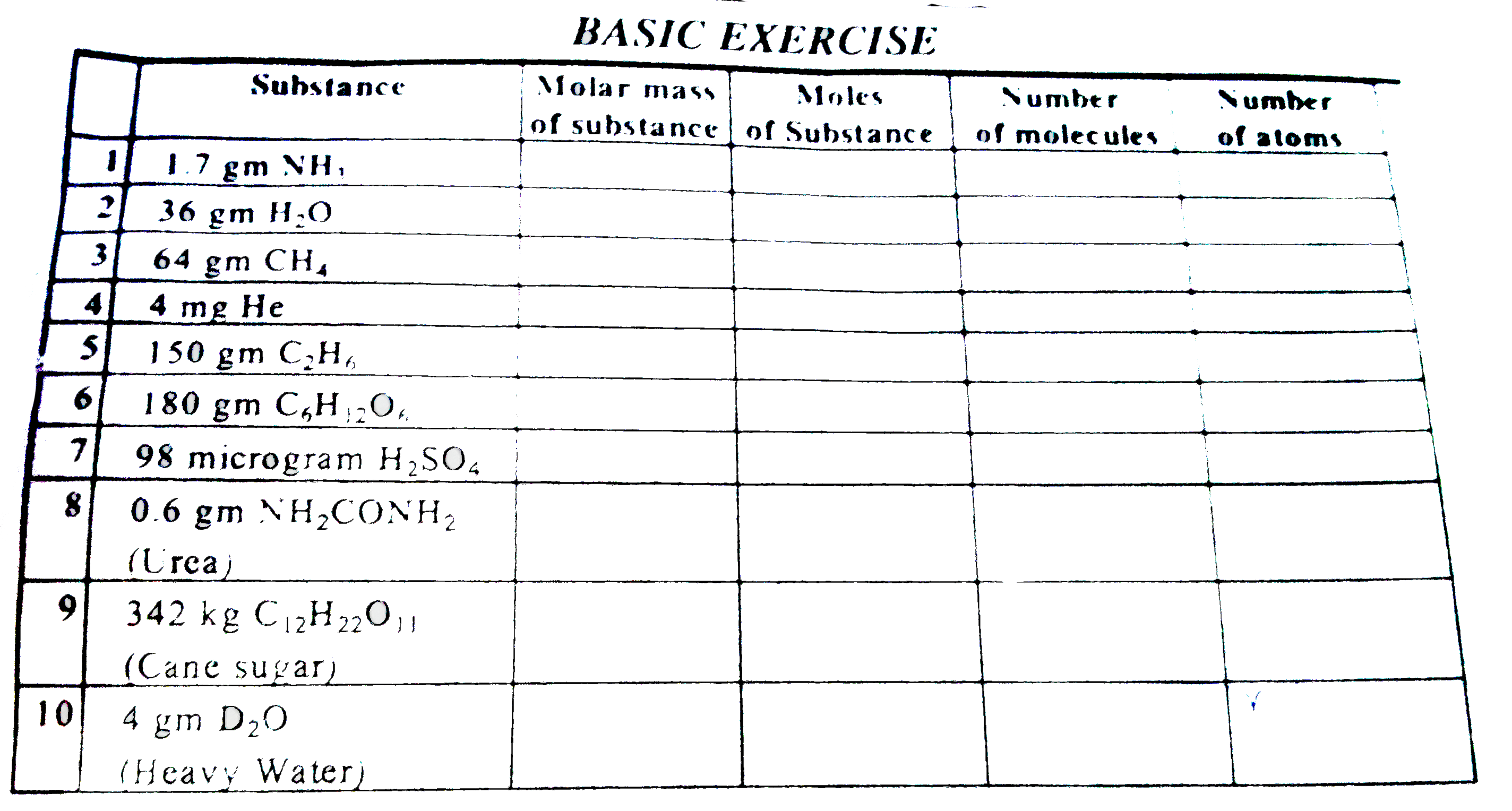Two containers A and B have the same volume. Container A contains 5 moles of O2 gas. Container B contains 3 moles of He and 2 moles of N2. Both the containers are separately kept in vacuum at the same temperature. Both the containers have very small orifices of the same area through which the gases leak out. Compare the rate of effusion of O2 with that of He gas mixture.
To solve the problem of comparing the rate of effusion of O2 gas in container A with the helium gas mixture in container B, we will follow these steps:
Step 1: Identify the Moles and Molecular Weights
- Container A: Contains 5 moles of O2.
- Container B: Contains 3 moles of Helium (He) and 2 moles of Nitrogen (N2).
- Molecular weights:
- O2: 32g/mol
- He: 4g/mol
- N2: 28g/mol
Step 2: Calculate the Rate of Effusion of Gases in Container B
The rate of effusion is given by Graham's law, which states that the rate of effusion of a gas is inversely proportional to the square root of its molar mass.
For the gases in container B:
- Rate of effusion of He to N2:
Rate of HeRate of N2=moles of Hemoles of N2×√Molar mass of N2Molar mass of He
Substituting the values:
32×√284=32×√7≈32×2.64575≈3.96
Step 3: Determine the Mole Fractions
Let x be the moles of N2:
- Moles of He=3.96x
- Total moles in container B = x+3.96x=4.96x
Now, calculate the mole fractions:
- Mole fraction of N2:
Mole fraction of N2=x4.96x=14.96≈0.202
- Mole fraction of He:
Mole fraction of He=3.96x4.96x=3.964.96≈0.798
Step 4: Calculate the Average Molecular Weight of the Mixture
Using the mole fractions and molecular weights:
Molecular weight of mixture=(0.202×28)+(0.798×4)
Calculating:
=5.656+3.192=8.848g/mol≈8.85g/mol
Step 5: Calculate the Rate of Effusion of O2 Compared to the Mixture
Using Graham's law again:
Rate of O2Rate of mixture=√Molar mass of mixtureMolar mass of O2=√8.8532
Calculating:
=√0.2765625≈0.525
Final Result
The rate of effusion of O2 is approximately 0.525 times that of the helium gas mixture.
---
- Container A: Contains 5 moles of O2.
- Container B: Contains 3 moles of Helium (He) and 2 moles of Nitrogen (N2).
- Molecular weights:
- O2: 32g/mol
- He: 4g/mol
- N2: 28g/mol
The rate of effusion is given by Graham's law, which states that the rate of effusion of a gas is inversely proportional to the square root of its molar mass.
- Rate of effusion of He to N2:
Rate of HeRate of N2=moles of Hemoles of N2×√Molar mass of N2Molar mass of He
Substituting the values:
32×√284=32×√7≈32×2.64575≈3.96
Let x be the moles of N2:
- Moles of He=3.96x
- Total moles in container B = x+3.96x=4.96x
- Mole fraction of N2:
Mole fraction of N2=x4.96x=14.96≈0.202
- Mole fraction of He:
Mole fraction of He=3.96x4.96x=3.964.96≈0.798
Using the mole fractions and molecular weights:
Molecular weight of mixture=(0.202×28)+(0.798×4)
Calculating:
=5.656+3.192=8.848g/mol≈8.85g/mol
Using Graham's law again:
Rate of O2Rate of mixture=√Molar mass of mixtureMolar mass of O2=√8.8532
Calculating:
=√0.2765625≈0.525
The rate of effusion of O2 is approximately 0.525 times that of the helium gas mixture.
Similar Questions
Two containers A and B have the some volume. Container A contains 5 mole of O2 gas. Containter B contains 3 moles of He and 2 moles of N2. Both the containers are separately kept in vacuum at the same temperature. Both the containers have very small orifices of the same area through which the gases leak out. Compare the rate of effusion of O2 with that of He gas mixture.
View Solution2 moles of CO2 gas contain the same number of atoms as __________ moles of CO.
View Solution
Knowledge Check
- Question 1 - Select One or More
5 moles of H2SO4 contain
A5 eq. of HB5 moles of SC20 eq. of OD10 eq. each of H, S and O - Question 2 - Select One
1 mole of CO2 contains -
A1×1023 molecules ,B6.022×1023C44 moleculesD44×1023 molecules - Question 3 - Select One
A container having some gas was kept in a moving train. The temperature of the gas in the container will
Aincrease slightlyBdecreaseCremain the sameDbecome infinite


